How to Write an Analysis Essay: Examples + Writing Guide
An analysis / analytical essay is a standard assignment in college or university. You might be asked to conduct an in-depth analysis of a research paper, a report, a movie, a company, a book, or an event. In this article, you’ll find out how to write an analysis paper introduction, thesis, main body, and conclusion, and analytical essay example.
So, what is an analytical essay? This type of assignment implies that you set up an argument and analyze it using a range of claims. The claims should be supported by appropriate empirical evidence. Note that you need to explore both the positive and negative sides of the issue fully.
Analytical skills are the key to getting through your academic career. Moreover, they can be useful in many real-life situations. Keep reading this article by Custom-writing experts to learn how to write an analysis!

❓ What Is an Analytical Essay?
- 🤔 Getting Started
📑 Analytical Essay Outline
- 📔 Choosing a Title
- 💁 Writing an Introduction
- 🏋 Writing a Body
- 🏁 Writing a Conclusion
🔗 References
Before you learn how to start an analysis essay, you should understand some fundamentals of writing this type of paper. It implies that you analyze an argument using a range of claims supported by facts . It is essential to understand that in your analysis essay, you’ll need to explore the negative sides of the issue and the positive ones. That’s what distinguishes an analytical essay from, say, a persuasive one.

These are the steps to write an academic paper :
- Review the literature . Before starting any paper, you should familiarize yourself with what has already been written in the field. And the analytical essay is no exception. The easiest way is to search on the web for the information.
- Brainstorm ideas. After you’ve done your search, it is time for a brainstorm! Make a list of topics for your analysis essay, and then choose the best one. Generate your thesis statement in the same way.
- Prepare an outline . Now, when you’ve decided on the topic and the thesis statement of your analytical essay, think of its structure. Below you will find more detailed information on how your paper should be structured.
- Write the first draft. You’ve done a lot of work by now. Congratulations! Your next goal is to write the first version of your analysis essay, using all the notes that you have. Remember, you don’t need to make it perfect!
- Polish your draft. Now take your time to polish and edit your draft to transform it into the paper’s final version.
You are usually assigned to analyze an article, a book, a movie, or an event. If you need to write your analytical essay on a book or an article, you’ll have to analyze the style of the text, its main points, and the author’s purported goals.
🤔 Analytical Essay: Getting Started
The key to writing an analysis paper is to choose an argument that you will defend throughout it. For example: maybe you are writing a critical analysis paper on George Orwell’s Animal Farm The first and imperative task is to think about your thesis statement. In the case of Animal Farm , the argument could be:
In Orwell’s Animal Farm , rhetoric and language prove to be more effective ways to keep social control than physical power.
The University of North Carolina at Chapel Hill gives a great explanation of the thesis statement , how to create one, and what its function is.
But that’s not all. Once you have your thesis statement, you need to break down how you will approach your analysis essay to prove your thesis. To do this, follow these steps:
- Define the main goal(s) of your analysis . Remember that it is impossible to address each and every aspect in a single paper. Know your goal and focus on it.
- Conduct research , both online and offline, to clarify the issue contained within your thesis statement.
- Identify the main parts of the issue by looking at each part separately to see how it works.
- Try to clearly understand how each part works.
- Identify the links between the various aspects of the topic .
- By using the information you found, try to solve your main problem .
At this point, you should have a clear understanding of both the topic and your thesis statement. You should also have a clear direction for your analysis paper firmly planted in your mind and recorded in writing.
This will give you what you need to produce the paper’s outline.
An outline is the starting point for your work. A typical analytical essay features the usual essay structure. A 500-word essay should consist of a one-paragraph introduction, a three-paragraph body, and a one-paragraph conclusion. Find below a great analytical essay outline sample. Feel free to use it as an example when doing your own work!
Analysis Essay: Introduction
- Start with a startling statement or provocative question.
“All animals are equal, but some animals are more equal”. Animal Farm abounds in ironic and provocative phrases to start an analytical essay.
- Introduce the work and its author.
- Give background information that would help the reader understand your opinion.
- Formulate a thesis statement informing the reader about the purpose of the essay. Essay format does not presuppose telling everything possible on the given topic. Thus, a thesis statement tells what you are going to say, implying what you will not discuss, establishing the limits.
In Animal Farm, Orwell uses different irony types to ridicule totalitarianism to manifest its inability to make every member of society equal and happy.
Analysis Essay: Body
The analytical essay structure requires 2-3 developmental paragraphs, each dedicated to one separate idea confirming your thesis statement. The following template should be used for each of the body paragraphs.
- Start with a topic sentence that supports an aspect of your thesis.
Dramatic irony is used in Animal Farm to point out society’s ignorance.
- Continue with textual evidence (paraphrase, summary, direct quotations, specific details). Use several examples that substantiate the topic sentence.
Animals are unaware of the fact that Boxer was never sent to the hospital. He was sent to the slaughterhouse. However, the reader and writer understand that this is a lie.
- Conclude with an explanation.
By allowing the readers to learn some essential facts before the characters, dramatic irony creates suspense and shows how easy it is to persuade and manipulate the public.
Analysis Essay Conclusion
The next four points will give you a short instruction on how to conclude an analytical essay.
- Never use new information or topics here.
- Restate your thesis in a different formulation.
- Summarize the body paragraphs.
- Comment on the analyzed text from a new perspective.
📔 Choosing a Title for Your Analysis Essay
Choosing a title seems like not a significant step, but it is actually very important. The title of your critical analysis paper should:
- Entice and engage the reader
- Be unique and capture the readers’ attention
- Provide an adequate explanation of the content of the essay in just a few carefully chosen words
In the Animal Farm example, your title could be:
“How Do the Pigs Manage to Keep Social Control on Animal Farm?”
Analysis Essay Topics
- Analyze the media content.
- Analyze the specifics and history of hip-hop culture.
- Sociological issues in the film Interstellar .
- Discuss the techniques M. Atwood uses to describe social issues in her novel The Handmaid’s Tale .
- Compare and analyze the paintings of Van Gogh and George Seurat.
- Analysis of Edgar Allan Poe’s The Black Cat .
- Examine the juvenile crime rates.
- Describe the influence of different parenting styles on children’s mind.
- Analyze the concept of the Ship of Theseus .
- Compare and analyze the various views on intelligence .
- Analysis of The Yellow Wallpaper by Charlotte Perkins Gilman .
- Discuss the techniques used by W. Shakespeare in A Midsummer Night’s Dream .
- Analyze the biography of Frederic Chopin .
- Manifestation of the Chicano culture in the artwork An Ofrenda for Dolores del Rio .
- Similarities and differences of Roman, Anglo-Saxon, and Spanish Empires .
- Describe the problem of stalking and its impact on human mental health.
- Examine the future of fashion .
- Analyze the topicality of the article Effectiveness of Hand Hygiene Interventions in Reducing Illness Absence .
- Discuss Thomas Paine’s impact on the success of American revolution.
- Meaningful messages in Recitatif by Toni Morrison .
- Explore the techniques used by directors in the film Killing Kennedy .
- Compare the leadership styles of Tang Empress Wu Zetian and the Pharaoh Cleopatra .
- Evaluate the credibility of Kristof’s arguments in his article Remote Learning Is Often an Oxymoron.
- Analyze genetically modified food.
- Examine the influence of Europeans on Indian tribes in The Narrative of the Captivity and Restoration of Mrs. Mary Rowlandson .
- Describe the rhetoric techniques used in The Portrait of Dorian Gray by Oscar Wilde .
- The importance of fighting against violence in communities in the documentary film The Interrupters .
- Analyze indoor and outdoor pollution.
- Analyze the issue of overprotective parenthood .
- Explore the connection between eating habits and advertisement.
- Discuss the urgence of global warming issue.
- Influence of sleep on people’s body and mental health.
- Analyze the relationship between Christianity and sports .
- Discuss the concept of leadership and its significance for company efficiency.
- Analyze the key lessons of the book Rich Dad Poor Dad by Robert Kiyosaki.
- Examine the specifics of nursing ethic.
- The theme of emotional sufferings in the short story A Rose for Emily .
- Analysis of bias in books for children .
- Analyze the rhetoric of the article Public Monuments .
- Describe the main messages in Jean-Paul Sartre’s Nausea .
- Explore the problem of structural racism in healthcare.
- The reasons of tango dance popularity.
- The shortcomings of the American educational system in Waiting for Superman.
- Analyze and compare Erin’s Law and Megan’s Law.
- Analyze the James Madison’s essay Federalist 10 .
- Examine symbols in the movie The Joker.
- Compare the thematic connection and stylistic devices in the poems The Road Not Taken and Find Your Way .
- Describe and analyze the life of Eddie Bernice Johnson.
- Explore the social classes in America.
- Crucial strengths and weaknesses of the main translation theories .
💁 Writing Your Analytical Essay Introduction
You must understand how to compose an introduction to an analysis paper. The University of Wollongong describes the introduction as a “map” of any writing. When writing the introduction, follow these steps:
- Provide a lead-in for the reader by offering a general introduction to the topic of the paper.
- Include your thesis statement , which shifts the reader from the generalized introduction to the specific topic and its related issues to your unique take on the essay topic.
- Present a general outline of the analysis paper.
Watch this great video for further instructions on how to write an introduction to an analysis essay.
Example of an Analytical Essay Introduction
“Four legs good, two legs bad” is one of the many postulates invented by George Orwell for his characters in Animal Farm to vest them with socialist ideology and control over the animal population. The social revolution on Manor Farm was built on language instruments, first for the collective success of the animals, and later for the power consolidation by the pigs. The novel was written in 1945 when the transition from limitless freedoms of socialist countries transformed into dictatorship. Through his animal protagonists, the author analyzes the reasons for peoples’ belief in the totalitarian regime. In Orwell’s Animal Farm , rhetoric and language prove to be more effective ways to keep social control than physical power.
🏋 Writing Your Analytical Essay Body
The body of the paper may be compared to its heart. This is the part where you show off your talent for analysis by providing convincing, well-researched, and well-thought-out arguments to support your thesis statement. You have already gathered the information, and now all you may start crafting your paper.
To make the body of an analytical essay, keep the following in mind:
- Discuss one argument per paragraph , although each argument can relate to multiple issues
- Strike a balance between writing in an unbiased tone, while expressing your personal opinion
- Be reasonable when making judgments regarding any of the problems you discuss
- Remember to include the opposing point of view to create a balanced perspective
The bottom line is: you want to offer opposing views, but you must pose your arguments so they will counter those opposing views and prove your point of view. Follow these steps when constructing each body paragraph:
- Choose the main sentence. The main or topic sentence will be the first line in your essay. The topic sentence is responsible for presenting the argument you will discuss in the paragraph and demonstrate how this argument relates to the thesis statement.
- Provide the context for the topic sentence , whether it relates to a quote, a specific incident in society, or something else. Offer evidence on who, what, where, when, why, and how.
- Give your analysis of the argument and how it adequately proves your thesis.
- Write a closing sentence that sums up the paragraph and provides a transition to the following paragraph.
Example of an Analytical Essay Body
Literacy can grant power, provided that there are animals who cannot read or write. In the beginning, the animals’ literacy and intellect are relatively the same. Old Major is the cleverest pig; he is the kind old philosopher, like Karl Marx or Vladimir Lenin. During his retirement, he develops a theory that all humans are the root of evil. His speech was the foundation for the pigs’ assumption of power. They refined his ideas into a new ideology and called it Animalism. They also learned how to read. It allowed the pigs to declare themselves the “mind workers.” Therefore, the pigs’ literacy assured the illiterate animals in their objective superiority.
Meanwhile, as the pigs were the intellectual elite, they were not supposed to work, which raised their social status by itself. Snowball tried to promote education among all the animals, but most of them failed to master the alphabet. This is a metaphor for the general public being predominantly ignorant and easy to manipulate. At the same time, Boxer and other animals that spend most of the day in hard work merely have no time to develop their intellect. Thus, the pigs’ intention to build a school for pig children was highly efficient. Unequal access to education and unequal ability to express one’s thoughts in perspective reinforce the social divide, making the pigs smarter and more powerful and undermining other animals’ self-esteem.
At this point, the pigs resort to propaganda and rhetoric. Squealer uses his oratorical gift to refine the pigs’ message to the other animals. Upon Napoleon’s order, he breaks the Seven Commandments of farm governance. At night, he climbs the ladder to change them, and once even falls from the ladder trying to change the commandment on alcohol. The “proletarian” animals soon forget what the Seven Commandments were like in the first place and are unsure if they have ever been altered. Further on, Minimus writes a poem praising Napoleon. Finally, Squealer replaces the Commandments with a single assertion: “All animals are equal, but some animals are more equal than others.” Language is no longer used to convince. It is used to control and manipulate.
🏁 Writing Your Analytical Essay Conclusion
The conclusion is short and sweet. It summarizes everything you just wrote in the essay and wraps it up with a beautiful shiny bow. Follow these steps to write a convincing conclusion:
- Repeat the thesis statement and summarize your argument. Even when using the best summary generator for the task, reread it to make sure all the crucial points are included.
- Take your argument beyond what is simply stated in your paper. You want to show how it is essential in terms of the bigger picture. Also, you may dwell on the influence on citizens of the country.
Example of an Analytical Essay Conclusion
Because of everything mentioned above, it becomes clear that language and rhetoric can rise to power, establish authority, and manipulate ordinary people. Animal Farm is the simplified version of a communist society. It shows how wise philosophers’ good intentions can be used by mean leaders to gain unopposed power and unconditional trust. Unfortunately, this can lead to the death of many innocent animals, i.e., people, as totalitarianism has nothing to do with people’s rule. Therefore, language and oratory are potent tools that can keep people oppressed and weak, deprive them of any chance for improvement and growth, and make them think that there is no other possible existence.
Now you are ready to write an analysis essay! See, it’s easier than you thought.
Of course, it’s always helpful to see other analysis essay examples. The University of Arkansas at Little Rock provides some great examples of an analytical paper .
✏️ Analysis Essay FAQ
A great analytical paper should be well-structured, cohesive, and logically consistent. Each part of the essay should be in its place, creating a smooth and easy-to-read text. Most importantly, the statements should be objective and backed by arguments and examples.
It is a paper devoted to analyzing a certain topic or subject. An analysis essay is all about reviewing certain details of the subject and interpreting them. For example, such an analysis for a poem includes a description of artistic means that helped the poet convey the idea.
Writing an analytical essay on a book/movie/poem start with an outline. Point out what catches the eye when reviewing the subject. See how these details can be interpreted. Make sure that you refer to the main idea/message. Add an appropriate introduction and a logical conclusion.
Being more analytical in writing can be essential for a student. This is a skill that can be self-taught: try to start noticing subtle details and describe them. As you write, interpret the facts and strive to draw conclusions. Try to be as objective as possible.
- Elements of Analysis
- How Can I Create Stronger Analysis?
- How to Write a Literary Analysis Essay: Bucks.edu
- Essay Structure | – Harvard College Writing Center
- Analytical Writing: Looking Closely (Colostate.edu)
- Analytical Thesis Statements – University of Arizona
- Writing an analytic essay – UTSC – University of Toronto
- Organizing Your Analysis // Purdue Writing Lab
- How to Write an Analytical Essay: 15 Steps (with Pictures)
- Share to Facebook
- Share to Twitter
- Share to LinkedIn
- Share to email

A film analysis essay might be the most exciting assignment you have ever had! After all, who doesn’t love watching movies? You have your favorite movies, maybe something you watched years ago, perhaps a classic, or a documentary. Or your professor might assign a film for you to make a...

A critique paper is an academic writing genre that summarizes and gives a critical evaluation of a concept or work. Or, to put it simply, it is no more than a summary and a critical analysis of a specific issue. This type of writing aims to evaluate the impact of...

What is a creative essay, if not the way to express yourself? Crafting such a paper is a task that allows you to communicate your opinion and tell a story. However, even using your imagination to a great extent doesn’t free you from following academic writing rules. Don’t even get...

A compare and contrast essay — what is it? In this type of paper, you compare two different things or ideas, highlighting what is similar between the two, and you also contrast them, highlighting what is different. The two things might be events, people, books, points of view, lifestyles, or...

What is an expository essay? This type of writing aims to inform the reader about the subject clearly, concisely, and objectively. The keyword here is “inform”. You are not trying to persuade your reader to think a certain way or let your own opinions and emotions cloud your work. Just stick to the...
![04.01 essay analysis Short Story Analysis: How to Write It Step by Step [New]](https://custom-writing.org/blog/wp-content/uploads/2020/12/man-sits-end-trolltunga-before-mountains-284x153.jpg)
Have you ever tried to write a story analysis but ended up being completely confused and lost? Well, the task might be challenging if you don’t know the essential rules for literary analysis creation. But don’t get frustrated! We know how to write a short story analysis, and we are...

Have you ever tried to get somebody round to your way of thinking? Then you should know how daunting the task is. Still, if your persuasion is successful, the result is emotionally rewarding. A persuasive essay is a type of writing that uses facts and logic to argument and substantiate...
![04.01 essay analysis Common Essay Mistakes—Writing Errors to Avoid [Updated]](https://custom-writing.org/blog/wp-content/uploads/2020/12/avoid-mistakes-ccw-284x153.jpg)
One of the most critical skills that students gain during their college years is assignment writing. Composing impressive essays and research papers can be quite challenging, especially for ESL students. Nonetheless, before learning the art of academic writing, you may make numerous common essay mistakes. Such involuntary errors appear in:...

You’re probably thinking: I’m no Mahatma Gandhi or Steve Jobs—what could I possibly write in my memoir? I don’t even know how to start an autobiography, let alone write the whole thing. But don’t worry: essay writing can be easy, and this autobiography example for students is here to show...
![04.01 essay analysis Why I Want to Be a Teacher Essay: Writing Guide [2024]](https://custom-writing.org/blog/wp-content/uploads/2020/12/senior-male-professor-writing-blackboard-with-chalk3-284x153.jpg)
Some people know which profession to choose from childhood, while others decide much later in life. However, and whenever you come to it, you may have to elaborate on it in your personal statement or cover letter. This is widely known as “Why I Want to Be a Teacher” essay.
![04.01 essay analysis Friendship Essay: Writing Guide & Topics on Friendship [New]](https://custom-writing.org/blog/wp-content/uploads/2020/12/smiley-female-friends-fist-bumping-284x153.jpg)
Assigned with an essay about friendship? Congrats! It’s one of the best tasks you could get. Digging through your memories and finding strong arguments for this paper can be an enjoyable experience. I bet you will cope with this task effortlessly as we can help you with the assignment. Just...

When you are assigned an autobiography to write, tens, and even hundreds of questions start buzzing in your head. How to write autobiography essay parts? What to include? How to make your autobiography writing flow? Don’t worry about all this and use the following three simple principles and 15 creative...
This resource helps me a lot. Thanks! You guys have great information. Do you think I can use these steps when taking a test? Could it be known as plagiarized if I just copy and paste the information?
Thanks, very good information.
Thanks for learning how to critique research papers in a proper way! This is what I need to cope with this task successfully! Thanks!
How much is an essay, and is there a chance it can be plagiarized?
Have a language expert improve your writing
Run a free plagiarism check in 10 minutes, generate accurate citations for free.
- Knowledge Base
- How to write a literary analysis essay | A step-by-step guide
How to Write a Literary Analysis Essay | A Step-by-Step Guide
Published on January 30, 2020 by Jack Caulfield . Revised on August 14, 2023.
Literary analysis means closely studying a text, interpreting its meanings, and exploring why the author made certain choices. It can be applied to novels, short stories, plays, poems, or any other form of literary writing.
A literary analysis essay is not a rhetorical analysis , nor is it just a summary of the plot or a book review. Instead, it is a type of argumentative essay where you need to analyze elements such as the language, perspective, and structure of the text, and explain how the author uses literary devices to create effects and convey ideas.
Before beginning a literary analysis essay, it’s essential to carefully read the text and c ome up with a thesis statement to keep your essay focused. As you write, follow the standard structure of an academic essay :
- An introduction that tells the reader what your essay will focus on.
- A main body, divided into paragraphs , that builds an argument using evidence from the text.
- A conclusion that clearly states the main point that you have shown with your analysis.
Instantly correct all language mistakes in your text
Upload your document to correct all your mistakes in minutes

Table of contents
Step 1: reading the text and identifying literary devices, step 2: coming up with a thesis, step 3: writing a title and introduction, step 4: writing the body of the essay, step 5: writing a conclusion, other interesting articles.
The first step is to carefully read the text(s) and take initial notes. As you read, pay attention to the things that are most intriguing, surprising, or even confusing in the writing—these are things you can dig into in your analysis.
Your goal in literary analysis is not simply to explain the events described in the text, but to analyze the writing itself and discuss how the text works on a deeper level. Primarily, you’re looking out for literary devices —textual elements that writers use to convey meaning and create effects. If you’re comparing and contrasting multiple texts, you can also look for connections between different texts.
To get started with your analysis, there are several key areas that you can focus on. As you analyze each aspect of the text, try to think about how they all relate to each other. You can use highlights or notes to keep track of important passages and quotes.
Language choices
Consider what style of language the author uses. Are the sentences short and simple or more complex and poetic?
What word choices stand out as interesting or unusual? Are words used figuratively to mean something other than their literal definition? Figurative language includes things like metaphor (e.g. “her eyes were oceans”) and simile (e.g. “her eyes were like oceans”).
Also keep an eye out for imagery in the text—recurring images that create a certain atmosphere or symbolize something important. Remember that language is used in literary texts to say more than it means on the surface.
Narrative voice
Ask yourself:
- Who is telling the story?
- How are they telling it?
Is it a first-person narrator (“I”) who is personally involved in the story, or a third-person narrator who tells us about the characters from a distance?
Consider the narrator’s perspective . Is the narrator omniscient (where they know everything about all the characters and events), or do they only have partial knowledge? Are they an unreliable narrator who we are not supposed to take at face value? Authors often hint that their narrator might be giving us a distorted or dishonest version of events.
The tone of the text is also worth considering. Is the story intended to be comic, tragic, or something else? Are usually serious topics treated as funny, or vice versa ? Is the story realistic or fantastical (or somewhere in between)?
Consider how the text is structured, and how the structure relates to the story being told.
- Novels are often divided into chapters and parts.
- Poems are divided into lines, stanzas, and sometime cantos.
- Plays are divided into scenes and acts.
Think about why the author chose to divide the different parts of the text in the way they did.
There are also less formal structural elements to take into account. Does the story unfold in chronological order, or does it jump back and forth in time? Does it begin in medias res —in the middle of the action? Does the plot advance towards a clearly defined climax?
With poetry, consider how the rhyme and meter shape your understanding of the text and your impression of the tone. Try reading the poem aloud to get a sense of this.
In a play, you might consider how relationships between characters are built up through different scenes, and how the setting relates to the action. Watch out for dramatic irony , where the audience knows some detail that the characters don’t, creating a double meaning in their words, thoughts, or actions.
Prevent plagiarism. Run a free check.
Your thesis in a literary analysis essay is the point you want to make about the text. It’s the core argument that gives your essay direction and prevents it from just being a collection of random observations about a text.
If you’re given a prompt for your essay, your thesis must answer or relate to the prompt. For example:
Essay question example
Is Franz Kafka’s “Before the Law” a religious parable?
Your thesis statement should be an answer to this question—not a simple yes or no, but a statement of why this is or isn’t the case:
Thesis statement example
Franz Kafka’s “Before the Law” is not a religious parable, but a story about bureaucratic alienation.
Sometimes you’ll be given freedom to choose your own topic; in this case, you’ll have to come up with an original thesis. Consider what stood out to you in the text; ask yourself questions about the elements that interested you, and consider how you might answer them.
Your thesis should be something arguable—that is, something that you think is true about the text, but which is not a simple matter of fact. It must be complex enough to develop through evidence and arguments across the course of your essay.
Say you’re analyzing the novel Frankenstein . You could start by asking yourself:
Your initial answer might be a surface-level description:
The character Frankenstein is portrayed negatively in Mary Shelley’s Frankenstein .
However, this statement is too simple to be an interesting thesis. After reading the text and analyzing its narrative voice and structure, you can develop the answer into a more nuanced and arguable thesis statement:
Mary Shelley uses shifting narrative perspectives to portray Frankenstein in an increasingly negative light as the novel goes on. While he initially appears to be a naive but sympathetic idealist, after the creature’s narrative Frankenstein begins to resemble—even in his own telling—the thoughtlessly cruel figure the creature represents him as.
Remember that you can revise your thesis statement throughout the writing process , so it doesn’t need to be perfectly formulated at this stage. The aim is to keep you focused as you analyze the text.
Finding textual evidence
To support your thesis statement, your essay will build an argument using textual evidence —specific parts of the text that demonstrate your point. This evidence is quoted and analyzed throughout your essay to explain your argument to the reader.
It can be useful to comb through the text in search of relevant quotations before you start writing. You might not end up using everything you find, and you may have to return to the text for more evidence as you write, but collecting textual evidence from the beginning will help you to structure your arguments and assess whether they’re convincing.
To start your literary analysis paper, you’ll need two things: a good title, and an introduction.
Your title should clearly indicate what your analysis will focus on. It usually contains the name of the author and text(s) you’re analyzing. Keep it as concise and engaging as possible.
A common approach to the title is to use a relevant quote from the text, followed by a colon and then the rest of your title.
If you struggle to come up with a good title at first, don’t worry—this will be easier once you’ve begun writing the essay and have a better sense of your arguments.
“Fearful symmetry” : The violence of creation in William Blake’s “The Tyger”
The introduction
The essay introduction provides a quick overview of where your argument is going. It should include your thesis statement and a summary of the essay’s structure.
A typical structure for an introduction is to begin with a general statement about the text and author, using this to lead into your thesis statement. You might refer to a commonly held idea about the text and show how your thesis will contradict it, or zoom in on a particular device you intend to focus on.
Then you can end with a brief indication of what’s coming up in the main body of the essay. This is called signposting. It will be more elaborate in longer essays, but in a short five-paragraph essay structure, it shouldn’t be more than one sentence.
Mary Shelley’s Frankenstein is often read as a crude cautionary tale about the dangers of scientific advancement unrestrained by ethical considerations. In this reading, protagonist Victor Frankenstein is a stable representation of the callous ambition of modern science throughout the novel. This essay, however, argues that far from providing a stable image of the character, Shelley uses shifting narrative perspectives to portray Frankenstein in an increasingly negative light as the novel goes on. While he initially appears to be a naive but sympathetic idealist, after the creature’s narrative Frankenstein begins to resemble—even in his own telling—the thoughtlessly cruel figure the creature represents him as. This essay begins by exploring the positive portrayal of Frankenstein in the first volume, then moves on to the creature’s perception of him, and finally discusses the third volume’s narrative shift toward viewing Frankenstein as the creature views him.
Some students prefer to write the introduction later in the process, and it’s not a bad idea. After all, you’ll have a clearer idea of the overall shape of your arguments once you’ve begun writing them!
If you do write the introduction first, you should still return to it later to make sure it lines up with what you ended up writing, and edit as necessary.
The body of your essay is everything between the introduction and conclusion. It contains your arguments and the textual evidence that supports them.
Paragraph structure
A typical structure for a high school literary analysis essay consists of five paragraphs : the three paragraphs of the body, plus the introduction and conclusion.
Each paragraph in the main body should focus on one topic. In the five-paragraph model, try to divide your argument into three main areas of analysis, all linked to your thesis. Don’t try to include everything you can think of to say about the text—only analysis that drives your argument.
In longer essays, the same principle applies on a broader scale. For example, you might have two or three sections in your main body, each with multiple paragraphs. Within these sections, you still want to begin new paragraphs at logical moments—a turn in the argument or the introduction of a new idea.
Robert’s first encounter with Gil-Martin suggests something of his sinister power. Robert feels “a sort of invisible power that drew me towards him.” He identifies the moment of their meeting as “the beginning of a series of adventures which has puzzled myself, and will puzzle the world when I am no more in it” (p. 89). Gil-Martin’s “invisible power” seems to be at work even at this distance from the moment described; before continuing the story, Robert feels compelled to anticipate at length what readers will make of his narrative after his approaching death. With this interjection, Hogg emphasizes the fatal influence Gil-Martin exercises from his first appearance.
Topic sentences
To keep your points focused, it’s important to use a topic sentence at the beginning of each paragraph.
A good topic sentence allows a reader to see at a glance what the paragraph is about. It can introduce a new line of argument and connect or contrast it with the previous paragraph. Transition words like “however” or “moreover” are useful for creating smooth transitions:
… The story’s focus, therefore, is not upon the divine revelation that may be waiting beyond the door, but upon the mundane process of aging undergone by the man as he waits.
Nevertheless, the “radiance” that appears to stream from the door is typically treated as religious symbolism.
This topic sentence signals that the paragraph will address the question of religious symbolism, while the linking word “nevertheless” points out a contrast with the previous paragraph’s conclusion.
Using textual evidence
A key part of literary analysis is backing up your arguments with relevant evidence from the text. This involves introducing quotes from the text and explaining their significance to your point.
It’s important to contextualize quotes and explain why you’re using them; they should be properly introduced and analyzed, not treated as self-explanatory:
It isn’t always necessary to use a quote. Quoting is useful when you’re discussing the author’s language, but sometimes you’ll have to refer to plot points or structural elements that can’t be captured in a short quote.
In these cases, it’s more appropriate to paraphrase or summarize parts of the text—that is, to describe the relevant part in your own words:
Here's why students love Scribbr's proofreading services
Discover proofreading & editing
The conclusion of your analysis shouldn’t introduce any new quotations or arguments. Instead, it’s about wrapping up the essay. Here, you summarize your key points and try to emphasize their significance to the reader.
A good way to approach this is to briefly summarize your key arguments, and then stress the conclusion they’ve led you to, highlighting the new perspective your thesis provides on the text as a whole:
If you want to know more about AI tools , college essays , or fallacies make sure to check out some of our other articles with explanations and examples or go directly to our tools!
- Ad hominem fallacy
- Post hoc fallacy
- Appeal to authority fallacy
- False cause fallacy
- Sunk cost fallacy
College essays
- Choosing Essay Topic
- Write a College Essay
- Write a Diversity Essay
- College Essay Format & Structure
- Comparing and Contrasting in an Essay
(AI) Tools
- Grammar Checker
- Paraphrasing Tool
- Text Summarizer
- AI Detector
- Plagiarism Checker
- Citation Generator
By tracing the depiction of Frankenstein through the novel’s three volumes, I have demonstrated how the narrative structure shifts our perception of the character. While the Frankenstein of the first volume is depicted as having innocent intentions, the second and third volumes—first in the creature’s accusatory voice, and then in his own voice—increasingly undermine him, causing him to appear alternately ridiculous and vindictive. Far from the one-dimensional villain he is often taken to be, the character of Frankenstein is compelling because of the dynamic narrative frame in which he is placed. In this frame, Frankenstein’s narrative self-presentation responds to the images of him we see from others’ perspectives. This conclusion sheds new light on the novel, foregrounding Shelley’s unique layering of narrative perspectives and its importance for the depiction of character.
Cite this Scribbr article
If you want to cite this source, you can copy and paste the citation or click the “Cite this Scribbr article” button to automatically add the citation to our free Citation Generator.
Caulfield, J. (2023, August 14). How to Write a Literary Analysis Essay | A Step-by-Step Guide. Scribbr. Retrieved July 5, 2024, from https://www.scribbr.com/academic-essay/literary-analysis/
Is this article helpful?

Jack Caulfield
Other students also liked, how to write a thesis statement | 4 steps & examples, academic paragraph structure | step-by-step guide & examples, how to write a narrative essay | example & tips, what is your plagiarism score.
- Request Info
Adult Education English 1

In each unit of this course, you will embark on a new journey. Through the study of literature, nonfiction, and life, you will explore the unknown, search for identity and equality, and seek achievement, opportunity, and understanding. You will read to analyze the way language is used to express human motivation and will research to examine the results of actions in the real world. The lessons in each unit will give you the tools you need to gain insights from what you read and to use your knowledge in creative and analytical writing.
Major Topics and Concepts
Module 01 Reading and Writing Narratives
- 01.00 Reading and Writing Narratives
- 01.01 Choosing Your Story
- 01.02 Discovering Characters
- 01.03 Identity Shaped by Conflict
- 01.04 Plot and Structure
- 01.05 Discovering the Theme
- 01.06 Writing a Narrative
- 01.07 Reading and Writing Narratives Discussion-Based Assessment
- 01.08 Author’s Word Choice
- 01.09 Publishing Your Narrative
Module 02 Analyzing Language and Structure
- 02.00 Analyzing Language and Structure
- 02.01 The Power of Words
- 02.02 Language in King’s Letter
- 02.03 Structure in King’s Letter
- 02.04 Respond to a Writing Prompt
- 02.05 Analyzing Language and Structure Discussion-Based Assessment
- 02.06 Organize and Develop Your Ideas
- 02.07 Segment One Exam
Module 03 Crafting a Winning Argument
- 03.00 Crafting a Winning Argument
- 03.01 What is an Argument?
- 03.02 Elements of a Strong Argument
- 03.03 Analyzing an Argument
- 03.04 Gathering Evidence
- 03.05 Writing the Opening
- 03.06 Outlining Your Argument
- 03.07 Writing Your Argument
- 03.08 A Powerful Presentation
- 03.09 Crafting a Winning Argument Discussion-Based Assessment
Module 04 Exploring the Elements of Style
- 04.00 Exploring the Elements of Style
- 04.01 Essay Analysis
- 04.02 Diction and Tone
- 04.03 Poetry Paraphrase
- 04.04 Diction Deep Dive
- 04.05 An Effective Introduction
- 04.06 Plan the Body
- 04.07 Write the Body and Conclusion
- 04.08 Exploring the Elements of Style Discussion-Based Assessment
- 04.09 Revise and Edit
- 04.10 Grammar Review
- 04.11 Segment Two Exam
Competencies
Language and structure in writing.
Students will demonstrate an understanding of language and structure in writing by describing the literary devices used in a piece of writing, describing the structure of a piece of writing, and creating a piece using literary devices and structure.
Narrative Writing
Students will demonstrate an understanding of narrative writing by analyzing a narrative and creating a story using narrative elements and devices.
Crafting an Argument
Students will demonstrate an understanding of crafting an argument by conducting research through source evaluation and documentation, formulating rhetorical appeals appropriate to audience and purpose, and delivering a presentation.
Literary Analysis
Students will demonstrate an understanding of explanatory writing techniques such as developing thesis statements, organizing content, and writing cohesive conclusions by writing an original piece that incorporates these techniques.
- Level Adult Ed
- Credits 1.0
- Estimated Completion Time 36 weeks
- Notes Meets English graduation requirement

Related Courses

Adult Education English 2

Adult Education Creative Writing

Adult Education Reading and Writing for a Purpose

Analysis Essay
Analysis essay generator.

There are still a lot of things that man has yet to discover. We still have not reached the core of the earth nor the depths of the oceans and we are still on the process of exploration. The human mind is capable of understanding any complex task or idea.
In the quest of knowledge and information, we need to incorporate different strategies. That is why even in writing, we have to discover new styles and processes of expressing or telling a narrative. Essay writing is just one of the many tools that a writer uses in order to convey his/her thoughts and opinions.
Rhetorical Analysis Essay Template
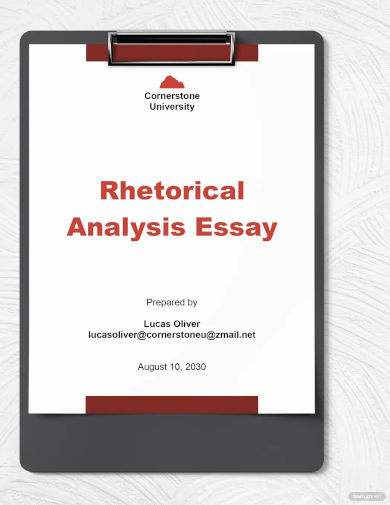
- Google Docs
Size: 101 KB
Literary Analysis Essay Outline Template
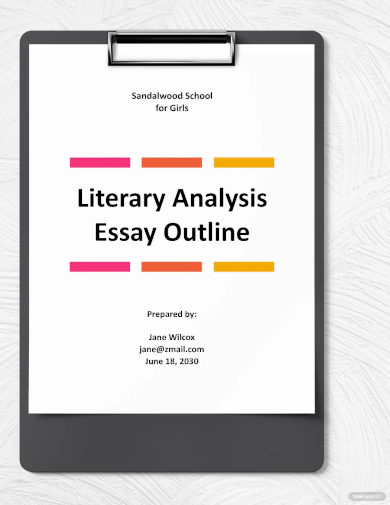
Size: 93 KB
Research Paper Analysis Essay Template
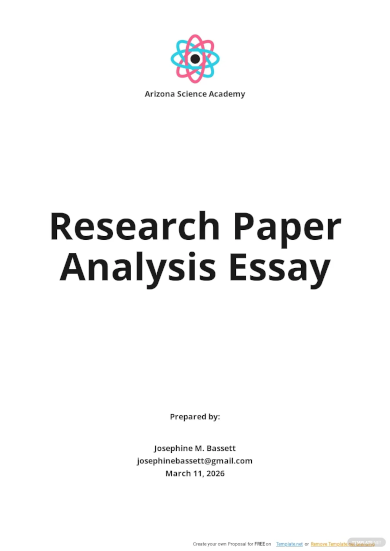
Size: 37 KB
Character Analysis Writing Essay Outline Template
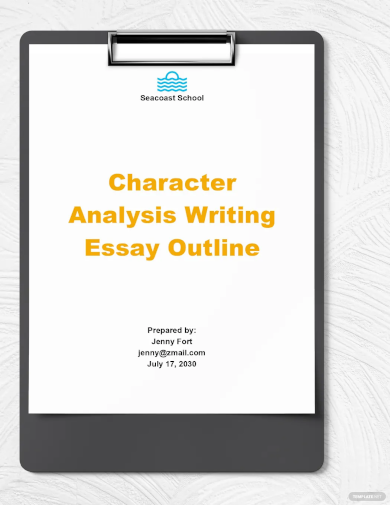
Size: 99 KB
Literary Analysis

Size: 11 KB
Photo Essay
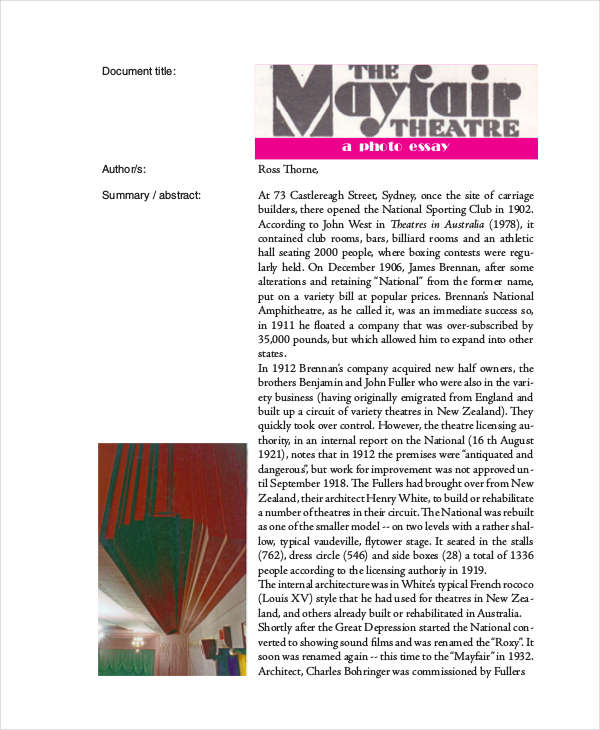
Persuasive Analysis

Size: 360 KB
Character Analysis
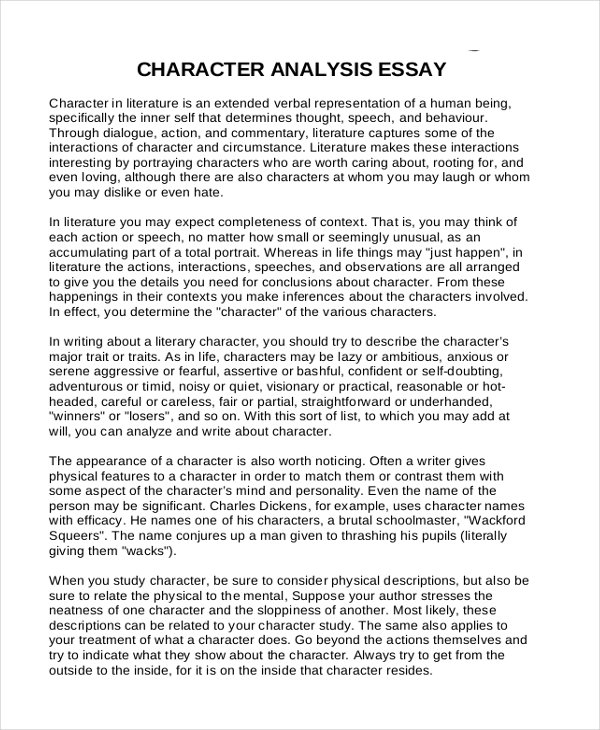
Size: 21 KB
What Is Analysis Essay?
An analysis essay is an article or a writing piece that involves the use of evaluation of an idea, an object, or an opinion. It involves a detailed assessment plan of a complex subject and break it down into smaller and simpler ideas in order to present its true meaning or essence.
In its true form, writing an analysis essay requires keen observation of the subject as well as unbiased judgment when presenting an idea. It avoids providing conclusions for essays or statements that may come from personal opinion or unformulated reasoning making this piece of literature helpful in presenting factual data and impartial inferences.
How to Structure Analysis Essay
There are two forms of an essay, one is formal and the other is informal. The former takes a standard structure while the latter is considered free essay writing where a writer can express or use any method as he/she pleases. While, for an analysis essay, it has to take the formal pattern. It should consist of an introduction, the body, and the conclusion or summary.
In addition to these three basic parts of an essay , you also need to make a title. It should be one that should follow or embody the whole point of your analysis as well as to give a preview of what it is all about.
Process Analysis Essay

Size: 198 kB
Rhetorical Essay
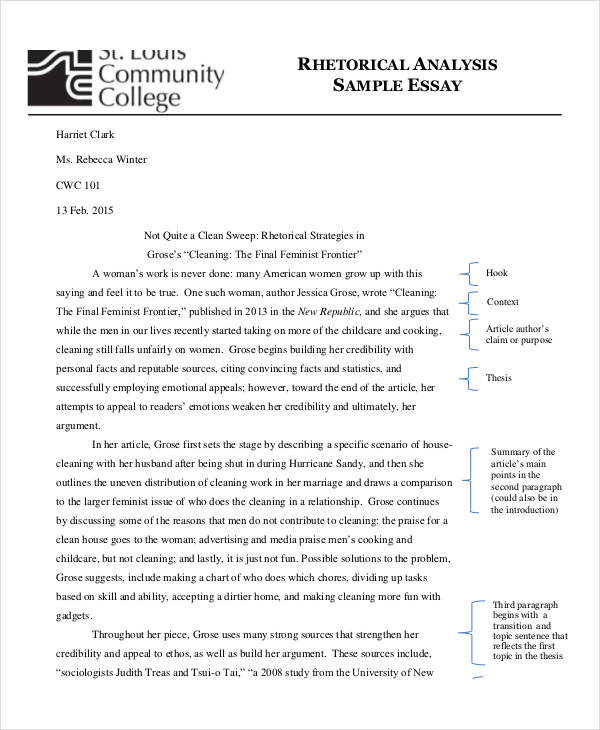
Size: 314 kB
Critical Analysis
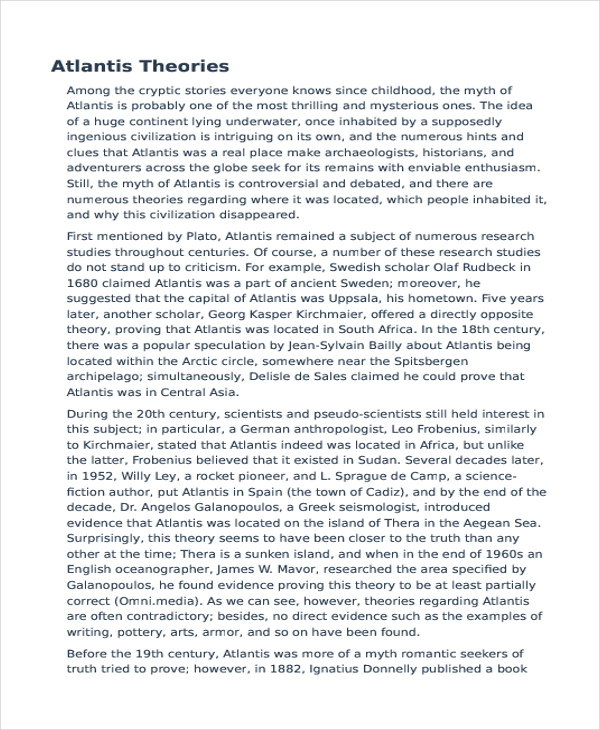
Size: 24 KB
Language Essay
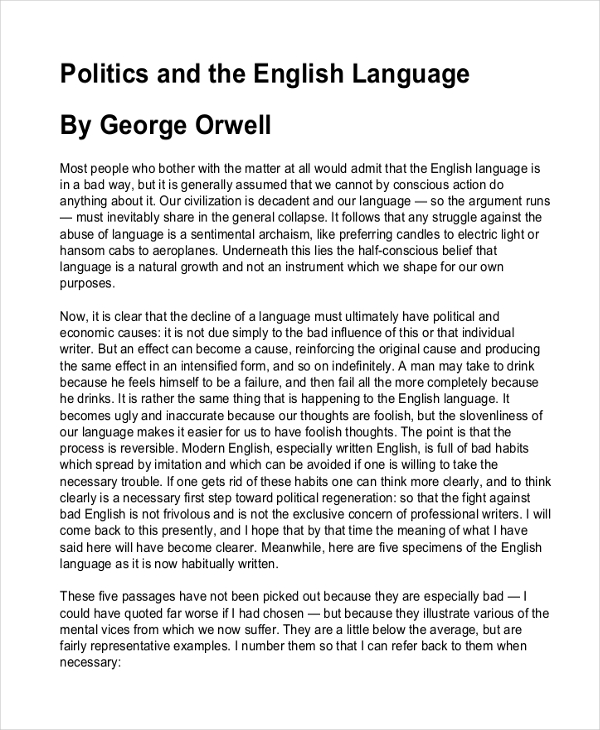
Size: 80 KB
Poetry Analysis

Size: 162 KB
SWOT Analysis

Job Analysis Essay
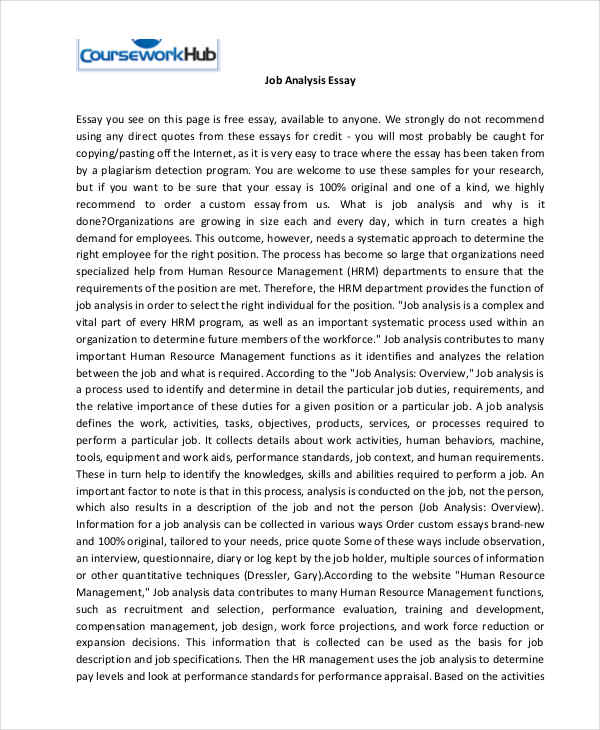
Size: 184 kB
Guidelines to Write Analysis Essay
There are many guidelines on how to write an effective essay, especially what that will present a detailed idea or interpretation of a more complex topic.
- Focus on the subject. Writing an analysis essay outline requires a writer to not get away from the main point. You need to avoid veering away even if the subject is too complex.
- Create an outline. You do not need to follow the basic pattern of essay writing. If you have created an outline that you are comfortable and you think is effective, use it.
- Establish an objective. You need to set a smart goal why you are doing an analysis essay. This helps you focus on what you are doing.
Benefits of Analysis Essay
Essay writing is a more common task that you see in schools. Students are often complaining when they are asked to write one especially an analysis essay. However, what we should understand is that writing an analysis essay has a lot of benefits that we might not be aware of.
First, you become better in writing effective essays . You will be exposed to a lot of thinking which is very important when you write.
The second one is it makes you a critical thinker. You become attentive to anything that crosses your path while at the same time being cautious of it. This attitude helps you in better decision-making.
Text prompt
- Instructive
- Professional
Analyze in an analysis essay the themes of freedom and confinement in "The Yellow Wallpaper"
Discuss in an analysis essay the portrayal of technology in dystopian literature
The Integral Role of Data Analysis in Modern Healthcare Research
This essay about the crucial role of data analysis in modern healthcare research highlights its impact on personalized patient care public health management operational efficiency and medical research. By utilizing big data and advanced algorithms healthcare providers can create tailored treatment plans improving patient outcomes and reducing adverse reactions. The COVID-19 pandemic illustrated how data analytics can predict and manage public health crises guiding decisions on lockdowns and vaccination strategies. Additionally data analysis enhances healthcare operations by identifying inefficiencies and optimizing resources. While offering significant benefits the essay also emphasizes the importance of addressing ethical and privacy concerns associated with handling sensitive patient information.
How it works
This intricate process involves collecting analyzing and interpreting massive volumes of data in order to derive insightful information that informs evidence-based policy decisions. Data analysis has a significant impact on many facets of healthcare from improving patient outcomes to maximizing operational effectiveness in healthcare institutions. As the healthcare industry develops quickly data analysis is becoming an essential part of both research and innovation.
One major way data analysis is changing healthcare is through personalizing patient treatment plans. With the use of big data and sophisticated algorithms and machine learning techniques that analyze genetic information patient histories and real-time health data healthcare providers can create customized treatment plans for each patient.
Personalized medicine improves overall patient outcomes by reducing the risk of side effects and increasing therapeutic efficacy. For instance data analysis in cancer allows for the identification of specific genetic mutations present in tumors opening the door to targeted medicines that are less harmful and more effective than traditional chemotherapy.
Furthermore data models were a key tool used by epidemiologists and public health officials to make well-informed decisions on resource allocation lockdowns and vaccination campaigns. These models illustrate the wide range of uses for data analysis in public health because they were constructed using data gathered from multiple sources such as testing facilities hospitals and even social media sites. Robust data analytics is critical for tracking the transmission of disease forecasting outbreaks and allocating healthcare resources as the COVID-19 pandemic demonstrated.
Data analysis also greatly improves the operational efficiency of healthcare institutions. Every day enormous volumes of data are produced by healthcare facilities ranging from supply chain logistics to patient records. Healthcare administrators can find inefficiencies simplify procedures and cut expenses by evaluating this data. Predictive analytics for instance can estimate the frequencies of patient admission helping hospitals to better allocate their staff and resources. By cutting down on wait times and guaranteeing prompt treatment this not only raises the standard of care but also improves the experience for patients.
Furthermore data analysis is essential to the advancement of medical research. Data analytics is used by researchers to find patterns and correlations in big databases which results in novel findings and inventions. For example by examining genetic data scientists can find connections between specific genes and illnesses opening the door to novel therapeutic approaches and preventative strategies. Moreover data analysis is used in clinical trials—which are essential for the creation of novel drugs and treatments—to track patient reactions and guarantee the security and effectiveness of novel medicines.
Concerns about privacy and ethics are also raised by the use of data analysis in healthcare. Strict data protection procedures are required due to the enormous volumes of sensitive information involved. Regulations like the Health Insurance Portability and Accountability Act (HIPAA) in the US which requires the secure handling of patient information must be followed by healthcare institutions. Furthermore ethical issues surrounding the application of AI in healthcare need to be taken into account in order to guarantee that algorithms are open objective and do not unintentionally maintain health inequities.
To sum up data analysis is a vital instrument in contemporary healthcare that propels improvements in public health customized medicine operational effectiveness and medical research. The breadth and significance of data analysis in healthcare will only grow as technology develops further presenting fresh chances to enhance patient outcomes and expedite the delivery of treatment. But to fully reap the benefits of data utilization in healthcare it is imperative to address the ethical and privacy issues that surround it. The healthcare sector can keep innovating and offering patients all around the world high-quality care by adopting data-driven approaches and making sure that data is managed responsibly.
Cite this page
The Integral Role of Data Analysis in Modern Healthcare Research. (2024, Jul 06). Retrieved from https://papersowl.com/examples/the-integral-role-of-data-analysis-in-modern-healthcare-research/
"The Integral Role of Data Analysis in Modern Healthcare Research." PapersOwl.com , 6 Jul 2024, https://papersowl.com/examples/the-integral-role-of-data-analysis-in-modern-healthcare-research/
PapersOwl.com. (2024). The Integral Role of Data Analysis in Modern Healthcare Research . [Online]. Available at: https://papersowl.com/examples/the-integral-role-of-data-analysis-in-modern-healthcare-research/ [Accessed: 7 Jul. 2024]
"The Integral Role of Data Analysis in Modern Healthcare Research." PapersOwl.com, Jul 06, 2024. Accessed July 7, 2024. https://papersowl.com/examples/the-integral-role-of-data-analysis-in-modern-healthcare-research/
"The Integral Role of Data Analysis in Modern Healthcare Research," PapersOwl.com , 06-Jul-2024. [Online]. Available: https://papersowl.com/examples/the-integral-role-of-data-analysis-in-modern-healthcare-research/. [Accessed: 7-Jul-2024]
PapersOwl.com. (2024). The Integral Role of Data Analysis in Modern Healthcare Research . [Online]. Available at: https://papersowl.com/examples/the-integral-role-of-data-analysis-in-modern-healthcare-research/ [Accessed: 7-Jul-2024]
Don't let plagiarism ruin your grade
Hire a writer to get a unique paper crafted to your needs.

Our writers will help you fix any mistakes and get an A+!
Please check your inbox.
You can order an original essay written according to your instructions.
Trusted by over 1 million students worldwide
1. Tell Us Your Requirements
2. Pick your perfect writer
3. Get Your Paper and Pay
Hi! I'm Amy, your personal assistant!
Don't know where to start? Give me your paper requirements and I connect you to an academic expert.
short deadlines
100% Plagiarism-Free
Certified writers
Opinion: As conservatives target same-sex marriage, its power is only getting clearer

- Copy Link URL Copied!
It’s been two years since the U.S. Supreme Court ruling in the Dobbs case that overturned the federal right to an abortion, and the troubling concurring opinion by Justice Clarence Thomas in which he expressed a desire to “revisit” other landmark precedents, including the freedom to marry for same-sex couples, codified nationally by the Obergefell Supreme Court decision, nine years ago Wednesday
Since that ruling, the LGBTQ+ and allied community has done much to protect the fundamental freedom to marry — passing the Respect for Marriage Act in Congress in 2022; sharing their stories this year to mark the 20th anniversary of the first state legalization of same-sex marriages, in Massachusetts; and in California , Hawaii and Colorado launching ballot campaigns to repeal dormant but still-on-the-books anti-marriage constitutional amendments.

California Democratic Party endorses ballot measures on same-sex marriage, taxes, rent control
The party’s executive board voted Sunday on which measures they would endorse.
May 19, 2024
This winter, I worked with a team at the Williams Institute at UCLA School of Law to survey nearly 500 married LGBTQ+ people about their relationships. Respondents included couples from every state in the country; on average they had been together for more than 16 years and married for more than nine years. Sixty-two percent married after the court’s 2015 Obergefell marriage decision, although their relationships started before before that. More than 30% of the couples had children and another 25% wanted children in the future.
One finding that jumped out of the data: Almost 80% of married same-sex couples surveyed said they were “very” or “somewhat” concerned about the Obergefell decision being overturned. Around a quarter of them said they’d taken action to shore up their family’s legal protections — pursuing a second-parent adoption, having children earlier than originally planned or marrying on a faster-than-expected timeline — because of concerns about marriage equality being challenged. One respondent said, “We got engaged the day that the Supreme Court ruled on the Dobbs decision and got married one week after.”

World & Nation
Same-sex marriage ruling creates new constitutional liberty
The Supreme Court’s historic ruling Friday granting gays and lesbians an equal right to marry nationwide puts an exclamation point on a profound shift in law and public attitudes, and creates the most significant and controversial new constitutional liberty in more than a generation.
June 26, 2015
As we examined the survey results, it became clearer than ever why LGBTQ+ families and same-sex couples are fighting so hard to protect marriage access — and the answer is really quite simple: The freedom to marry has been transformative for them. It has not only granted them hundreds of additional rights and responsibilities, but it has also strengthened their bonds in very real ways.
Nearly every person surveyed (93%) said they married for love; three-quarters added that they married for companionship or legal protections. When asked how marriage changed their lives, 83% reported positive changes in their sense of safety and security, and 75% reported positive changes in terms of life satisfaction. “I feel secure in our relationship in a way I never thought would be possible,” one participant told us. “I love being married.”
The evolution of same-sex marriage
I’ve been studying LGBTQ+ people and families for my entire career — and even still, many of the findings of the survey touched and inspired me.
Individual respondents talked about the ways that marriage expanded their personal family networks, granting them (for better and worse!) an additional set of parents, siblings and loved ones. More than 40% relied on each other’s families of origin in times of financial or healthcare crisis, or to help out with childcare. Some told of in-laws who provided financial assistance to buy a house, or cared for them while they were undergoing chemotherapy for cancer.

Analysis:: Antonin Scalia’s dissent in same-sex marriage ruling even more scornful than usual
The legal world may have become inured to wildly rhetorical opinions by Justice Antonin Scalia, but his dissent in the Supreme Court’s same-sex marriage decision Friday reaches new heights for its expression of utter contempt for the majority of his colleagues.
And then there was the effect on children. Many respondents explained that their marriage has provided security for their children, and dignity and respect for the family unit. Marriage enabled parents to share child-rearing responsibilities — to take turns being the primary earner (and carrying the health insurance), and spending more time at home with the kids.
The big takeaway from this study is that same-sex couples have a lot on the line when it comes to the freedom to marry — and they’re going to do everything possible to ensure that future political shifts don’t interfere with their lives. As couples across the country continue to speak out, share their stories — and in California, head to the ballot box in November to protect their hard-earned freedoms — it’s clear to me that it’s because they believe wholeheartedly, and with good reason, that their lives depend on it.
Abbie E. Goldberg is an affiliated scholar at the Williams Institute at UCLA School of Law and a psychology professor at Clark University, where she directs the women’s and gender studies.
More to Read

Your guide to Proposition 3: Affirming gay marriage in California’s Constitution
July 5, 2024
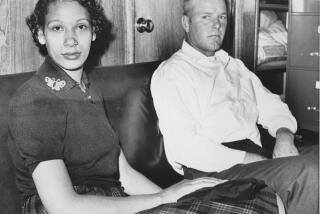
Opinion: Interracial marriage went from criminal to commonplace. Could it go back?
June 9, 2024

Newsom urges California voters to protect same-sex marriage amid Supreme Court distrust
June 7, 2024
A cure for the common opinion
Get thought-provoking perspectives with our weekly newsletter.
You may occasionally receive promotional content from the Los Angeles Times.
More From the Los Angeles Times

Opinion: Happy birthday, Amazon? Why one longtime user isn’t celebrating the tech behemoth’s 30th

Tracking the trouble and hope that define the American farm

Opinion: Americans are getting our ‘pursuit of happiness’ all wrong. There’s a simple fix

Opinion: End the blows against the beauty of baseball
July 4, 2024

IMAGES
VIDEO
COMMENTS
Essay Analysis Test. 50 terms. hashtagquiztime. Preview. Tone and Diction Quiz. 19 terms. brookesschaffer. Preview. English 4.01. 20 terms. k9244063. Preview. 7.04 The Spark and Fire. 8 terms ... a writing prompt that asks for the writer to respond with an essay that tells a story. passive voice. the form of a verb used in a sentence in which ...
Exam: 04.01 Essay Analysis. AI Homework Help. Expert Help. Study Resources. Log in Join. English Exam 4.01.docx - Exam: 04.01 Essay Analysis. Doc Preview. Pages 7. Total views 100+ ... TOP Rationality and Irrationality COG Analysis 17 is a problem in bureaucracies. document. t Table Number of Value of t for desired trials confidence N 80 90 95 ...
ability to be believed. Secede. to go apart from, to leave a group or separate ones self. Courier. someone who runs packages or errands. Succeed. to go after, to follow in order. Concurrent. happening at the same time.
Teams was acting up so I recorded this afterwards. We breakdown Calypso Borealis one more time and learn how to add it to our essay!4.01- Essay Analysis - ht...
Understand the purpose of an essayAnalyze naturalism in "Calypso Borealis"Summarize the essay
1. In your first sentence, mention the author, the title of the text, and the central idea of the entire text. What part is this. 4. Write one sentence recapping the central idea for each section. What part is this. 3. Arrange your sentences into a paragraph. What part is this.
Exam: 04.01 Essay Analysis Essay Questions Read the excerpt from John Muir's "Calypso Borealis" and answer the question. [1] After earning a few dollars working on my brother-in law's farm near Portage [Wisconsin], I set off on the first of my long lonely excursions, botanising in glorious freedom around the Great Lakes and wandering through innumerable tamarac and arbor-vitae swamps, and ...
How to Write an Analytical Essay in 7 Simple Steps. Written by MasterClass. Last updated: Jun 7, 2021 • 3 min read. Analytical essays provide a way to share your insights about a work of literature, scientific study, or historical event.
Provide a lead-in for the reader by offering a general introduction to the topic of the paper. Include your thesis statement, which shifts the reader from the generalized introduction to the specific topic and its related issues to your unique take on the essay topic. Present a general outline of the analysis paper.
Table of contents. Step 1: Reading the text and identifying literary devices. Step 2: Coming up with a thesis. Step 3: Writing a title and introduction. Step 4: Writing the body of the essay. Step 5: Writing a conclusion. Other interesting articles.
View 4.01 esaay analisys.docx from ENGLISH 1 0206 at Florida Virtual School. 4.01 essay analysis 1. Read the third paragraph from Muir's essay "Calypso Borealis" and answer the question. [3] But when
one inch. where the title goes. centered. another way to describe a thesis. main idea. forbidden expressions in a formal essay. 1st & 2nd person. review for rough draft editing Learn with flashcards, games, and more — for free.
04.01 Essay Analysis; 04.02 Diction and Tone; 04.03 Poetry Paraphrase; 04.04 Diction Deep Dive; 04.05 An Effective Introduction; 04.06 Plan the Body; 04.07 Write the Body and Conclusion; 04.08 Exploring the Elements of Style Discussion-Based Assessment; 04.09 Revise and Edit; 04.10 Grammar Review; 04.11 Segment Two Exam
An analysis essay is an article or a writing piece that involves the use of evaluation of an idea, an object, or an opinion. It involves a detailed assessment plan of a complex subject and break it down into smaller and simpler ideas in order to present its true meaning or essence. In its true form, writing an analysis essay requires keen ...
Question 4 (Essay Worth 10 points) (04.01 MC) The third provided source in the prompt is titled "The Benefits of Reading: Separating Fact from Fiction" by Molly Wigand. The central idea of the article is that reading provides numerous benefits to individuals, contrary to some myths and misconceptions about reading.
[Last Name] 1 Kimberly Mrs. Hron AP Literature & Composition 12-13-20 04.01 Practice Essay Five In the passage provided, Catherine is recovering from an incident between Heathcliff and Edgar. Catherine had locked herself away from everyone for 3 days. Through use of rhetoric devices such as motifs and flashbacks, Catherine's characterized as a living corpse with little mental stability left.
04.05 Speech Analysis Evaluate Sample Essaysd Reflect Respond to the following questions using complete sentences. essay. ... the quotes just became a few words or just fewer quotes in general. By the third essay, the sentences in the quotes themselves served less value than the ones before, and this just might be because of the poor selection ...
04.01 Defining and Evaluating an Argument. 7 terms. sonjakozak. Preview. 04.02 The Anatomy of an Argument. 8 terms. sonjakozak. Preview. Challenge B Intermediate Logic.
This essay about the Supreme Court case Graham vs. Connor analyzes the significant impact of its 1989 decision on law enforcement practices. The ruling introduced an "objective reasonableness" standard to evaluate police use of force focusing on what a reasonable officer would do in the same situation without the benefit of hindsight.
Data analysis has a significant impact on many facets of healthcare from improving patient outcomes. Essay Example: This intricate process involves collecting analyzing and interpreting massive volumes of data in order to derive insightful information that informs evidence-based policy decisions. Data analysis has a significant impact on many ...
View 04.01 Essay Analysis - Google Docs.pdf from ENGLISH 3.07 at FLVS. Readthee xcerpto fJ ohnM uir's" CalypsoB orealis"a nda nswertheq uestion. [5]H
A detailed account of a person's life. a short portion. The central idea is the central, unifying element of the story, which ties together all of the other elements of fiction used by the author to tell the story. The main idea is the point of the paragraph. restate the meaning of what you just read in your own words.
When the 46th President of the United States took the debate stage a week ago, it became apparent, even from his first answer, that this would not be the performance he hoped for.
Read this passage from a novel written in 1847. In this excerpt, Nelly Dean, the housekeeper and one of the novel's narrators, sits with Catherine as she emerges from self-imposed seclusion on the heels of a quarrel between Heathcliff and Edgar. Read the passage carefully. Then in a well-written essay, analyze how the author uses literary elements and techniques to characterize Catherine and ...
As we examined the survey results, it became clearer than ever why LGBTQ+ families and same-sex couples are fighting so hard to protect marriage access — and the answer is really quite simple ...
Logical Argument. An illustration of something that makes clear sense; appeals to reader's sense of logic (Paragraph MOD) Narration. The accounting of a sequence of events (Paragraph MOD) Study with Quizlet and memorize flashcards containing terms like Analogy, Anecdote, Anti-Climatic Order of Sentances and more.
4.01_Essay_Questions.docx. Exam: 04.01 Essay Analysis Essay Questions Read the excerpt from John Muir's "Calypso Borealis" and answer the question. [1] After earning a few dollars working on my brother-in law's farm near Portage [Wisconsin], I set off on the first of my long lonely